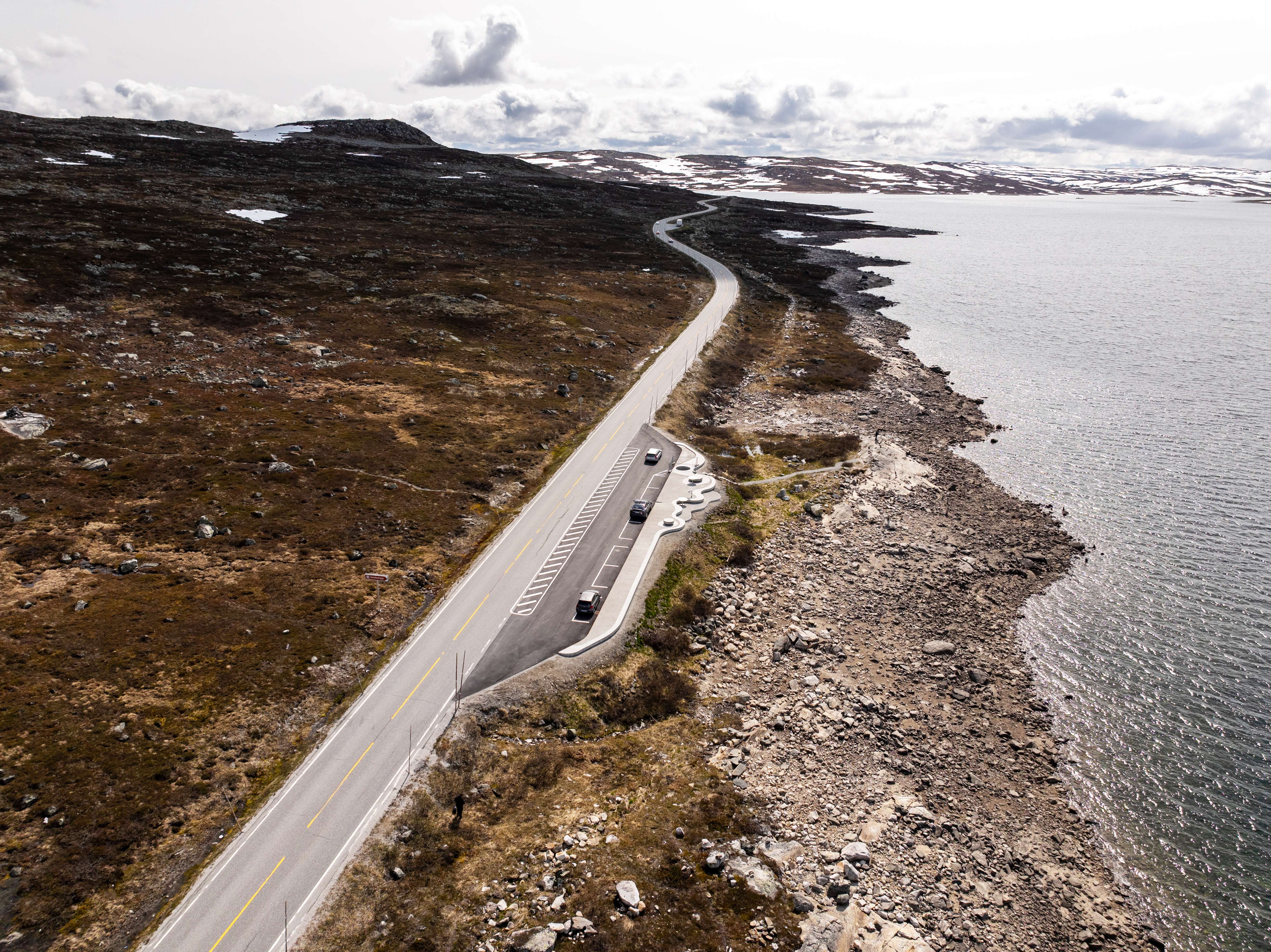
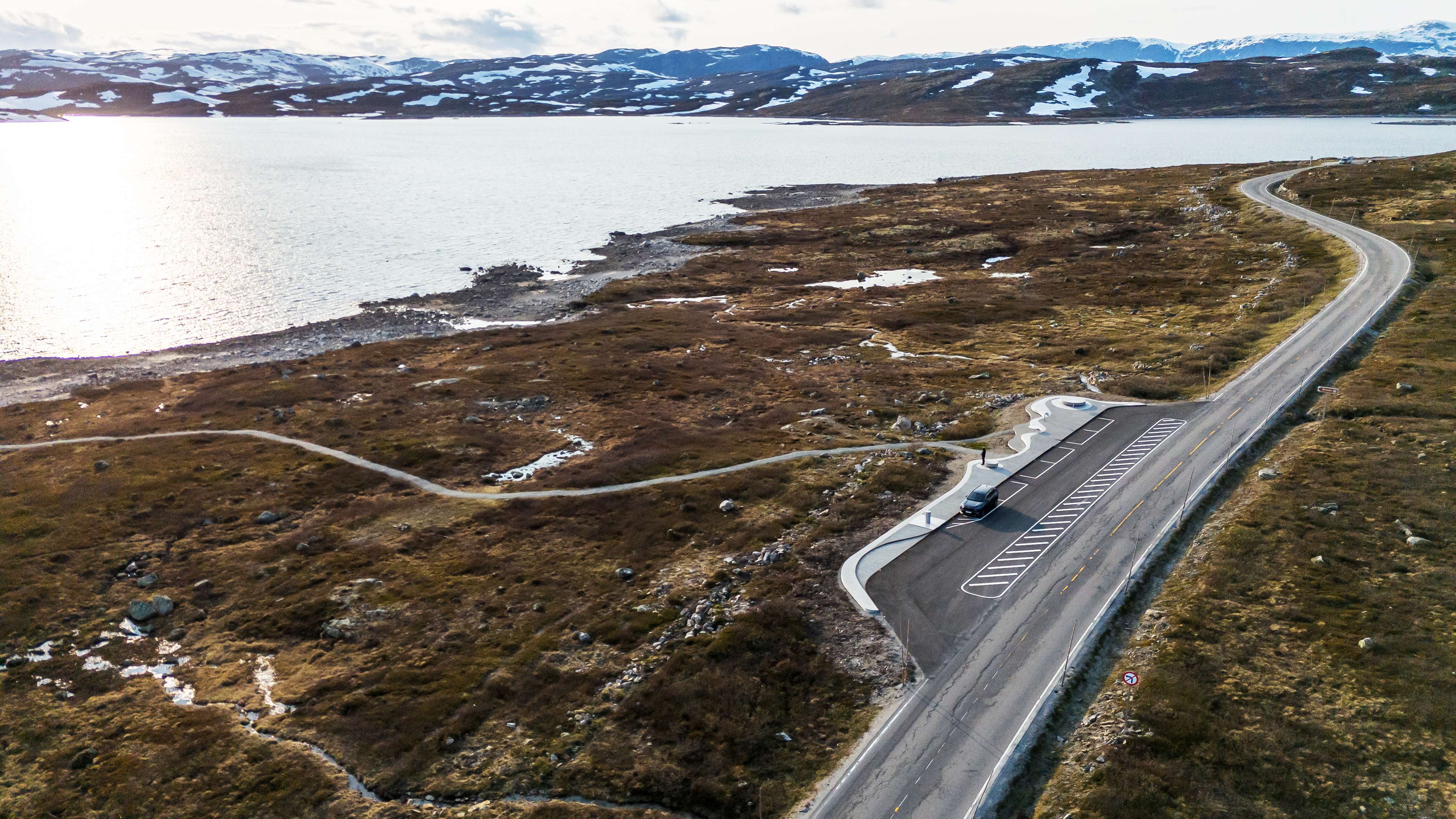
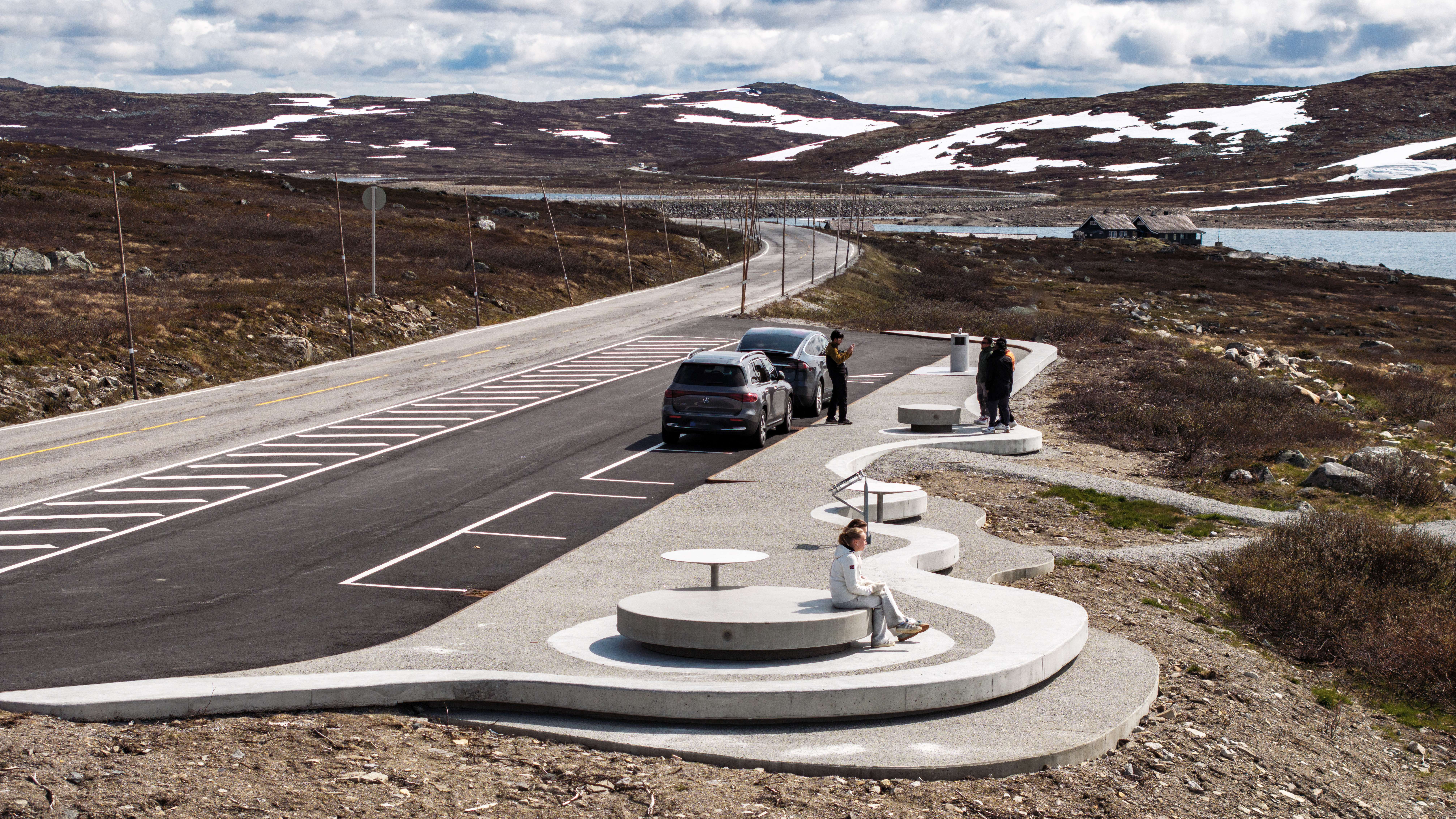
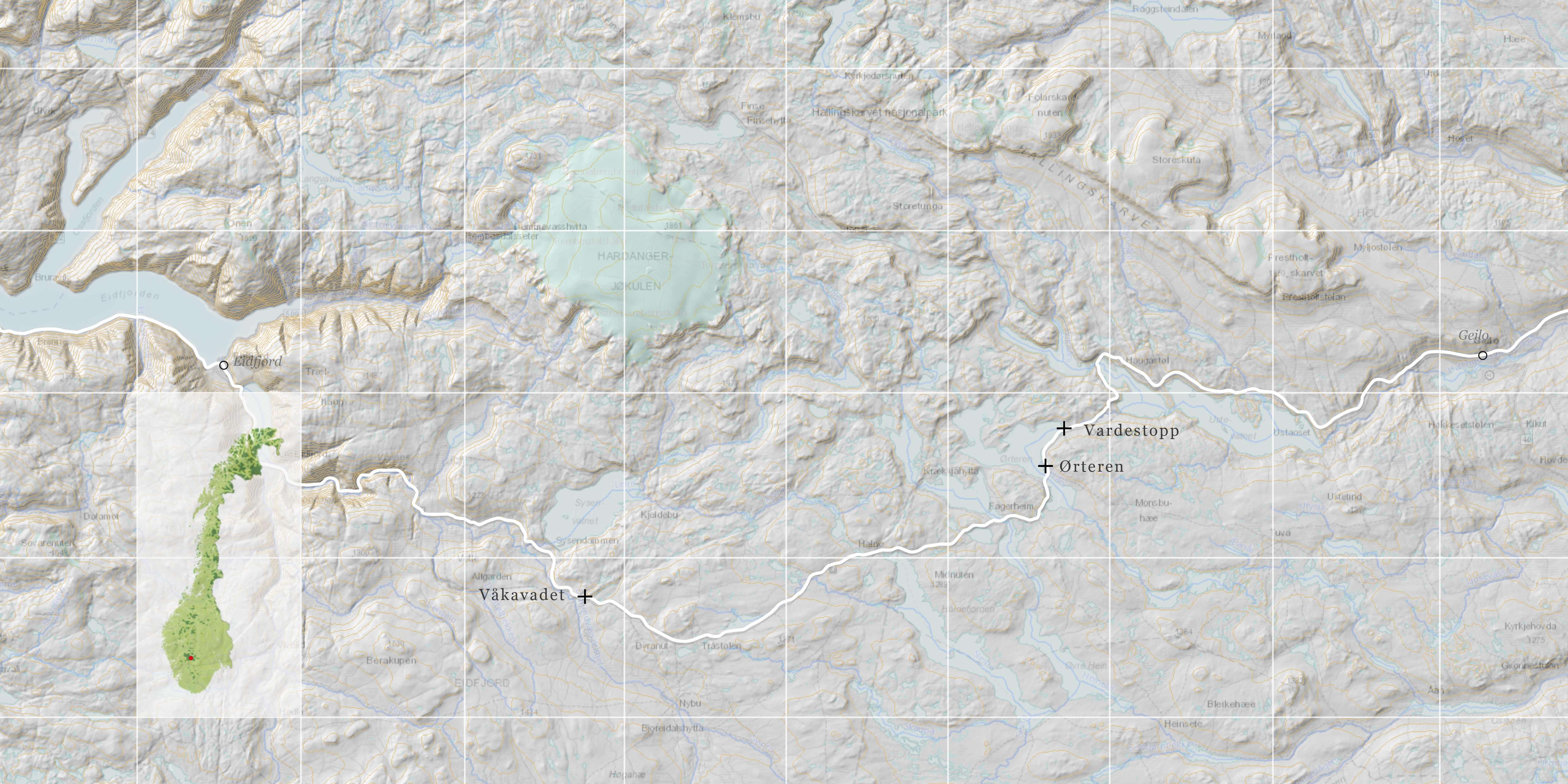
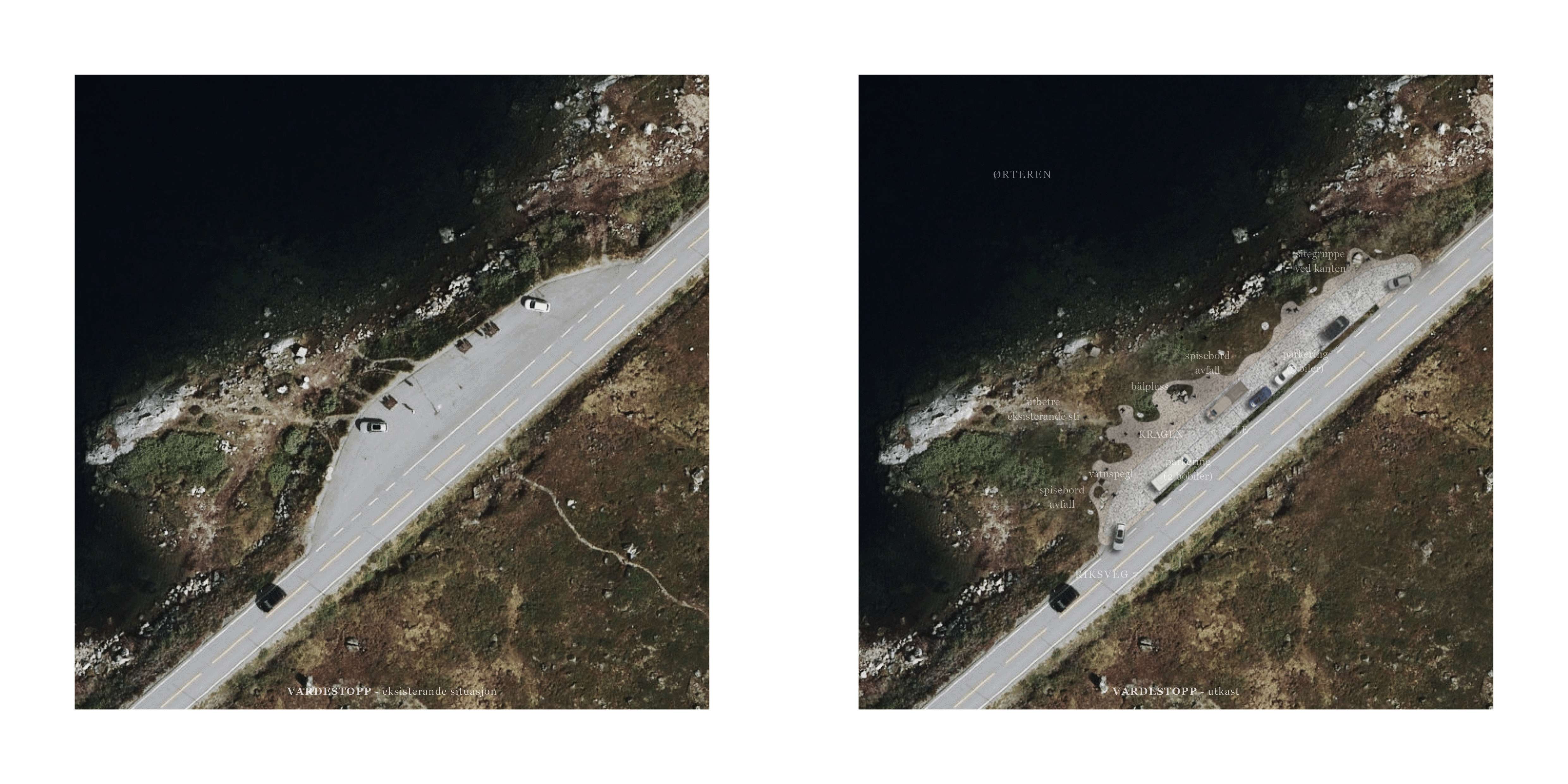
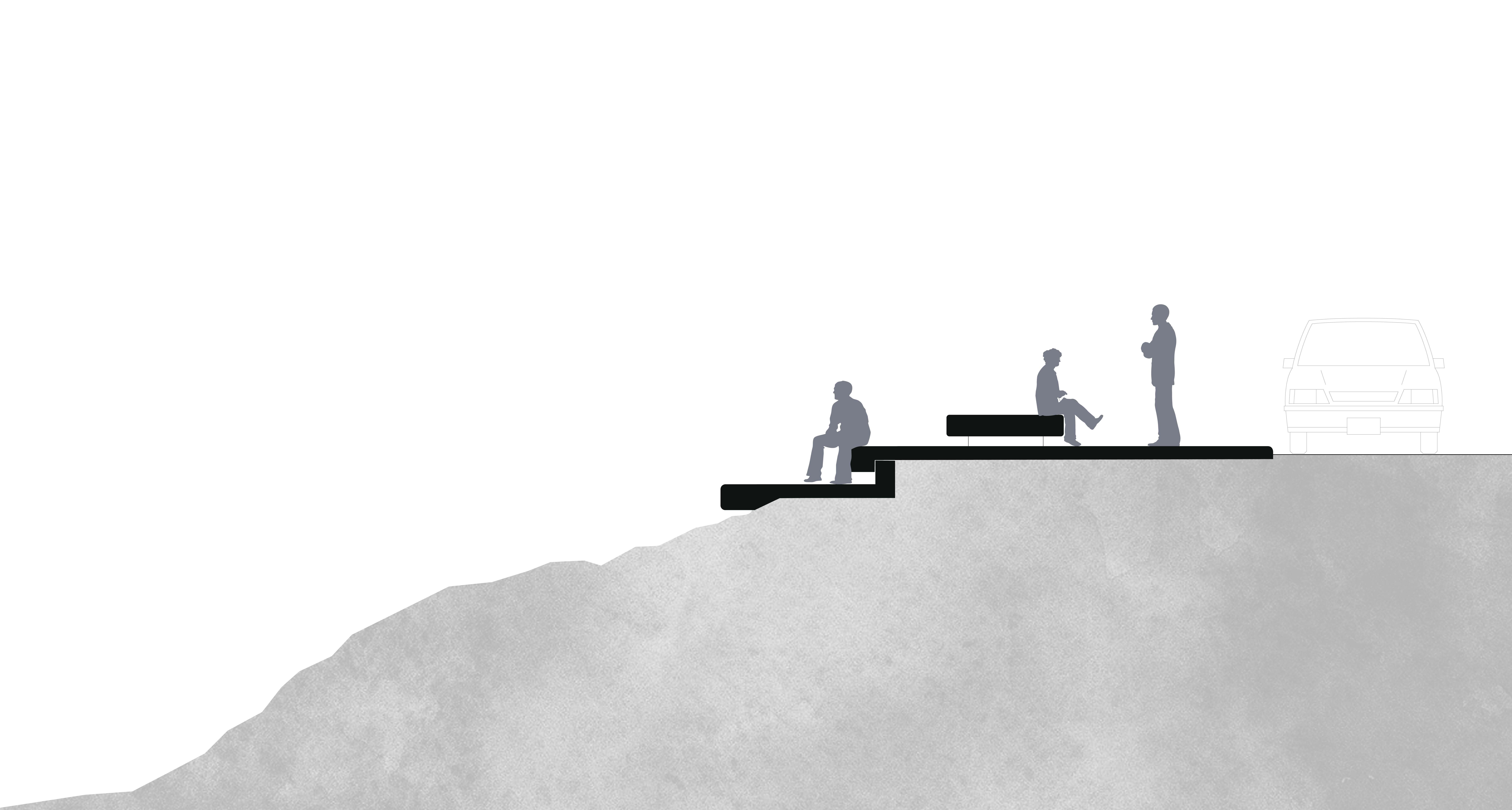
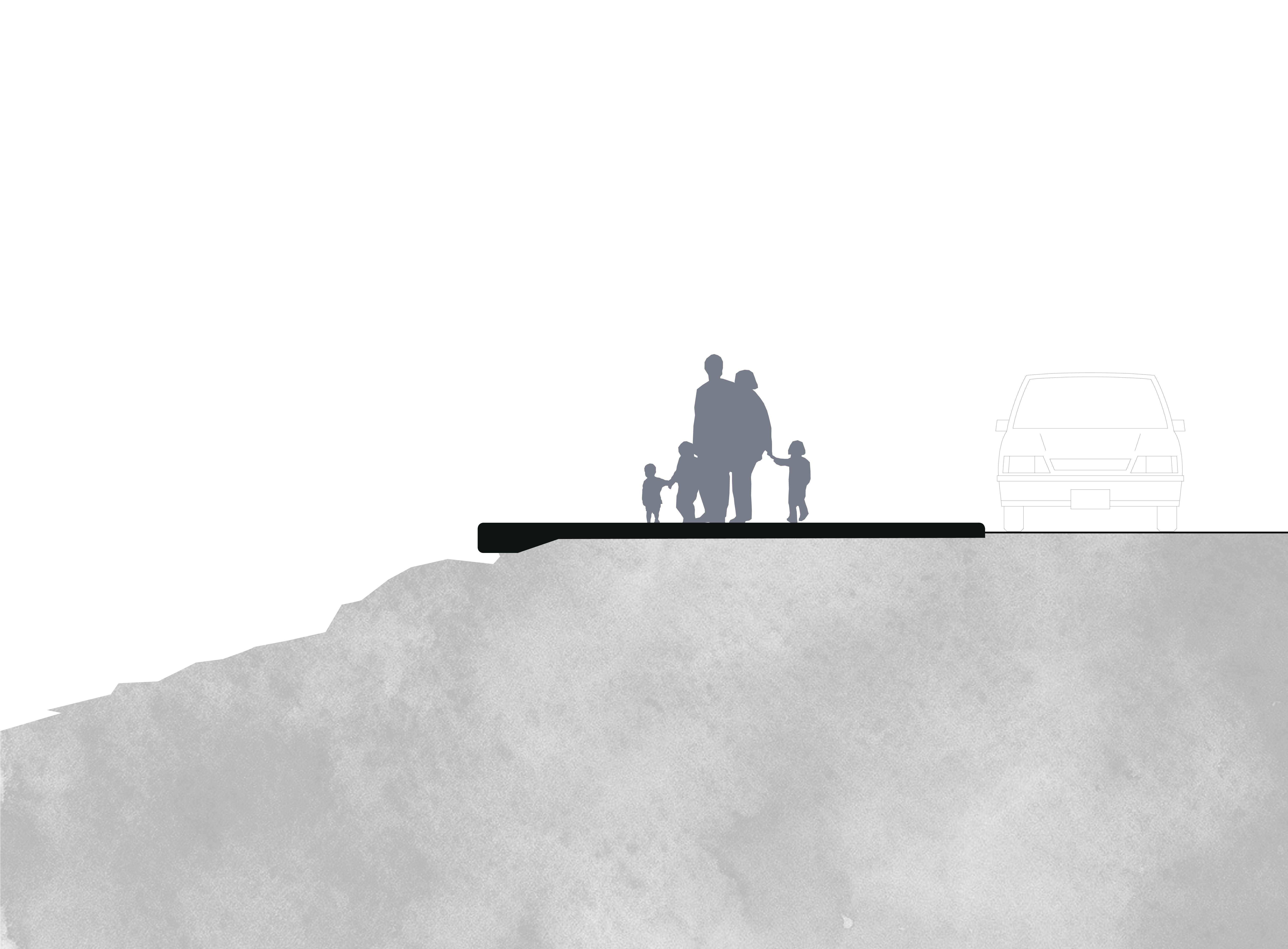

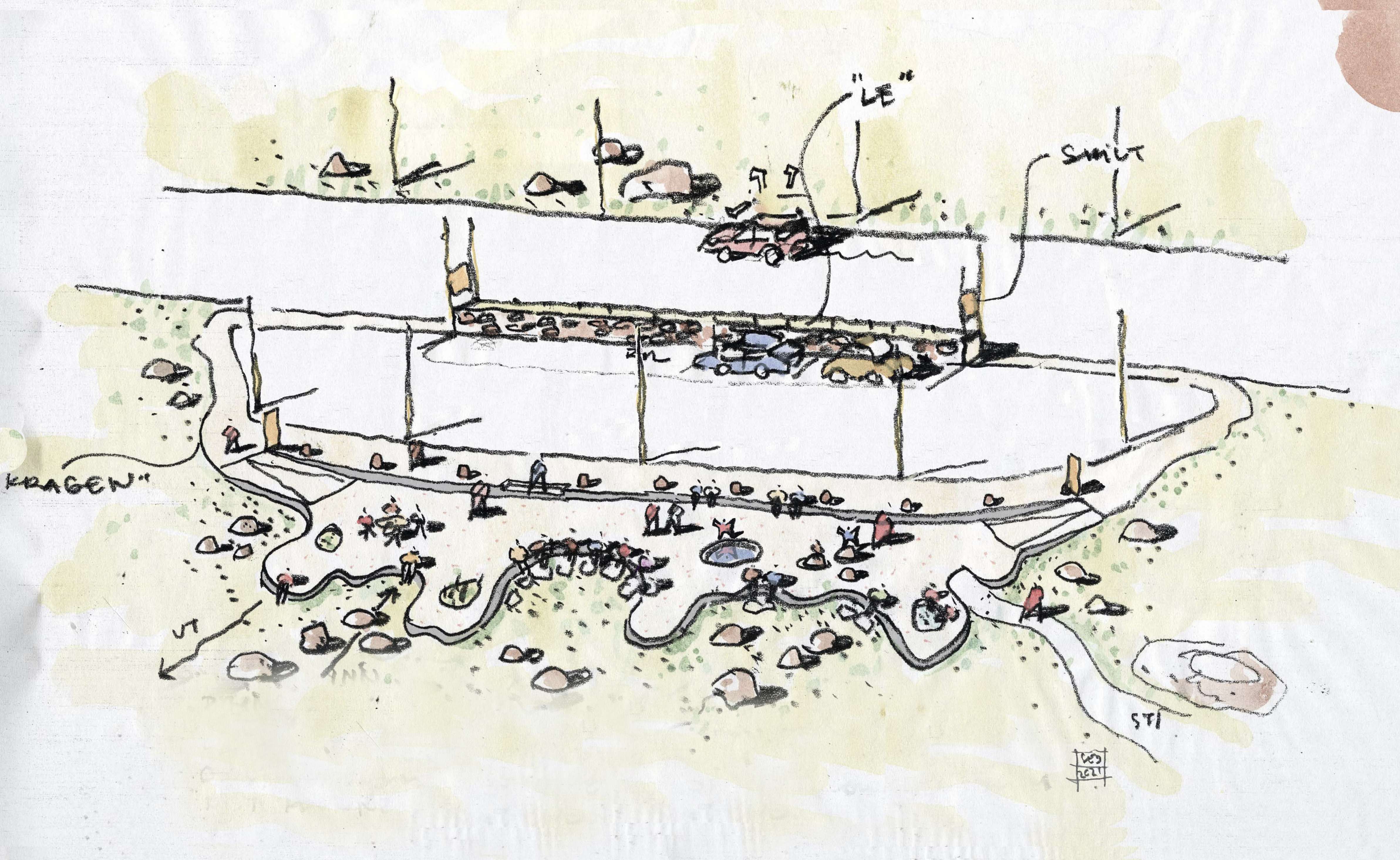
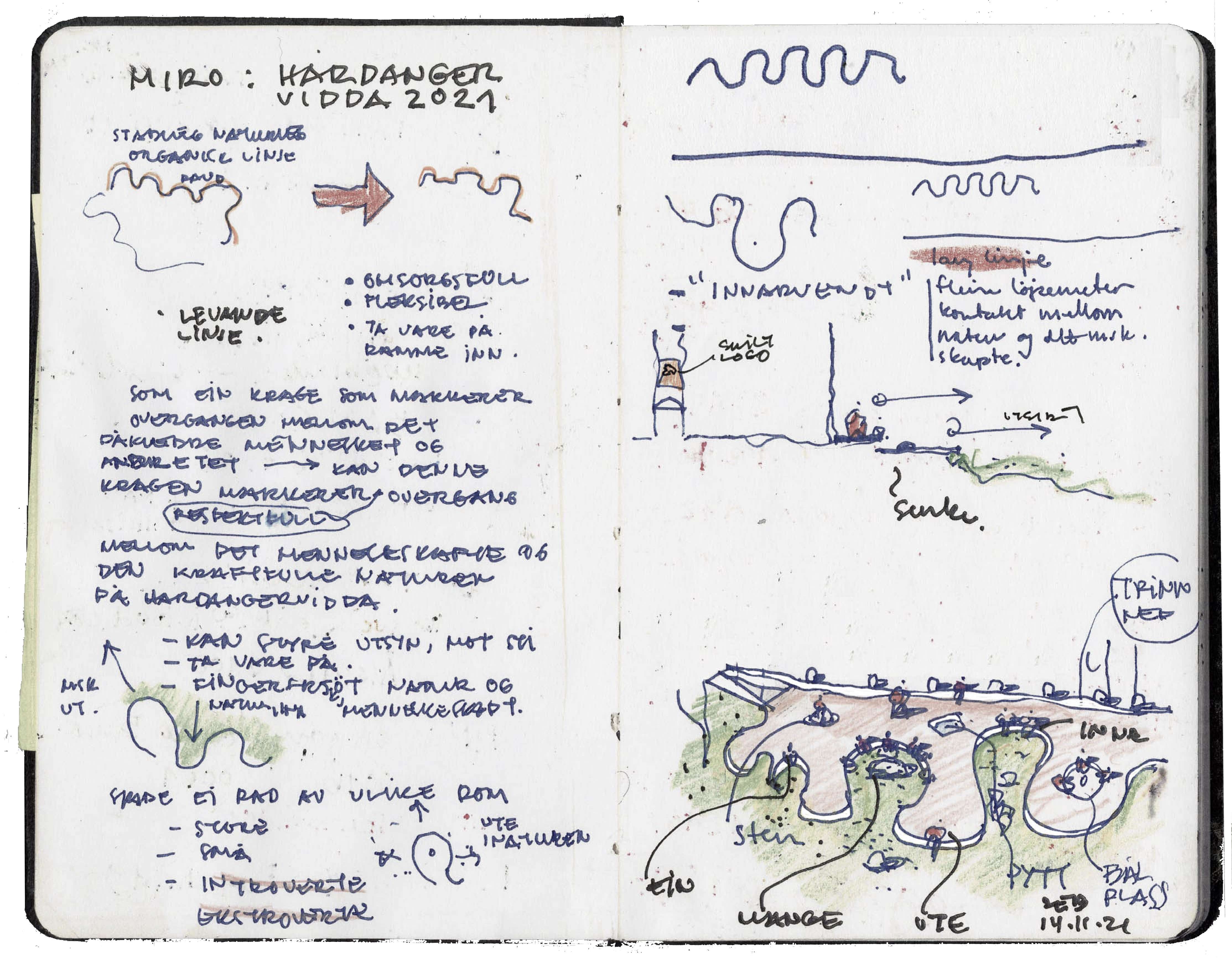
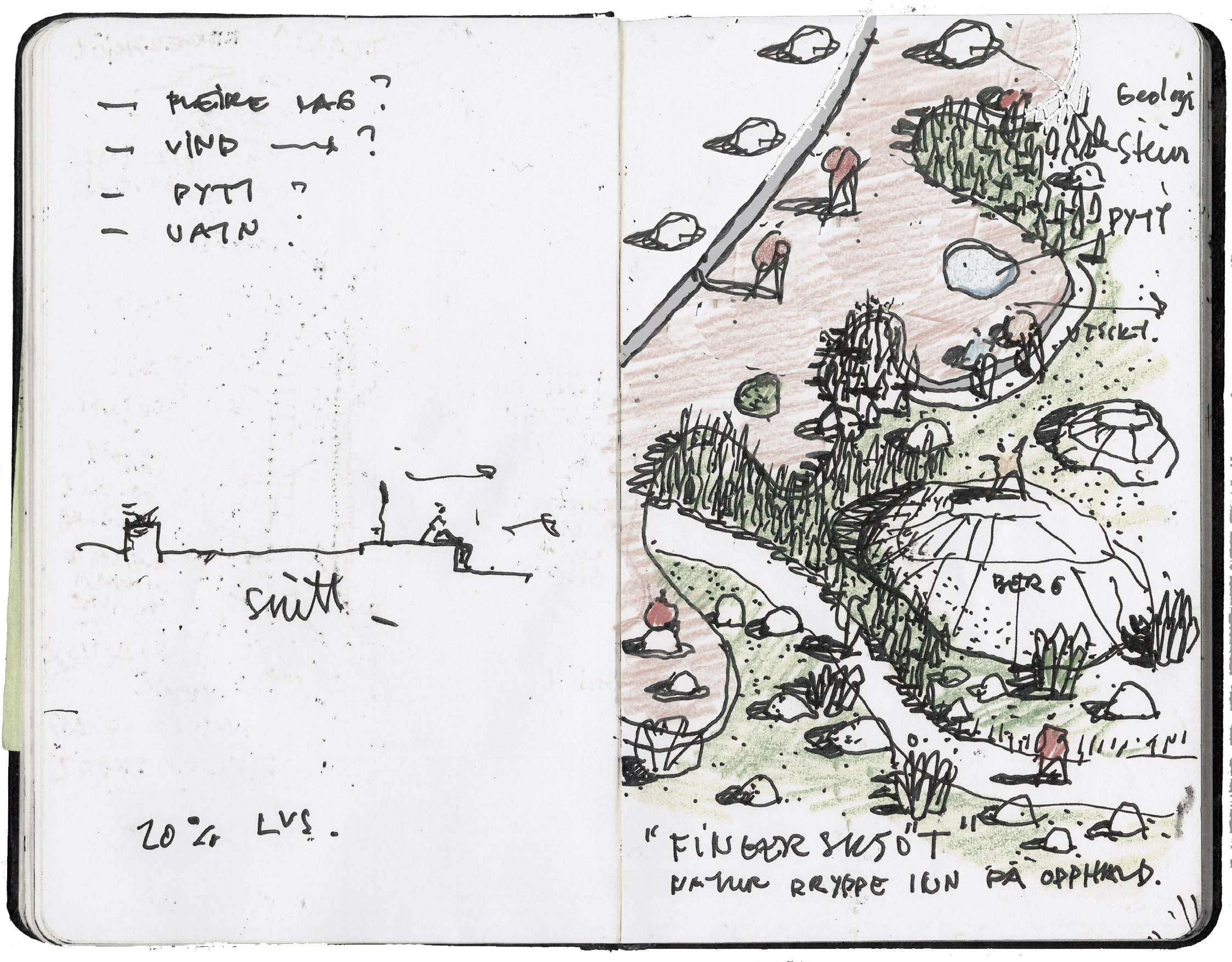
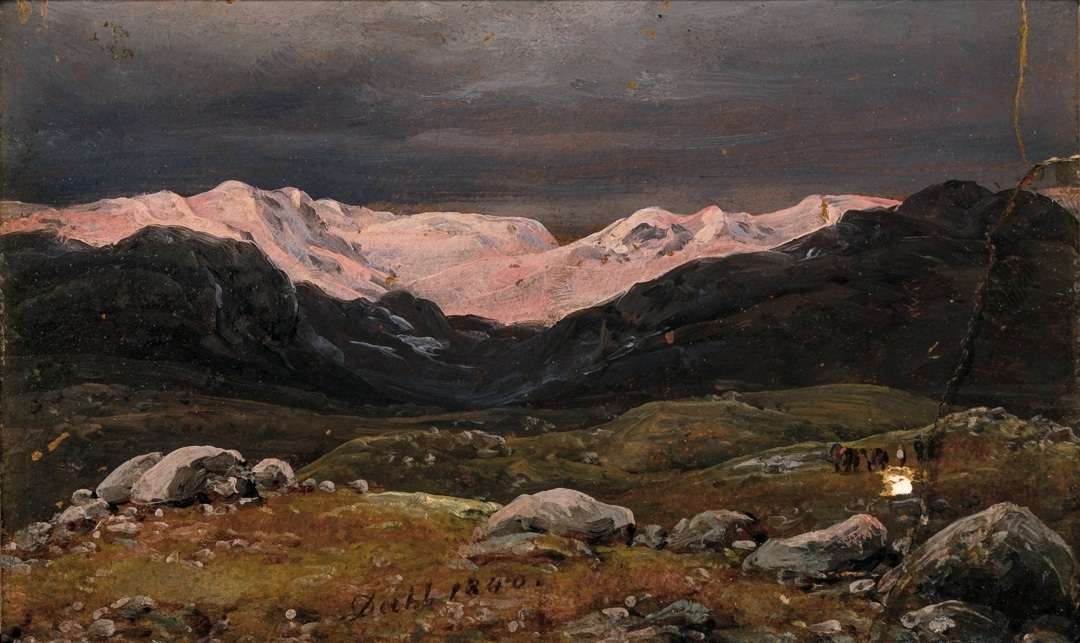
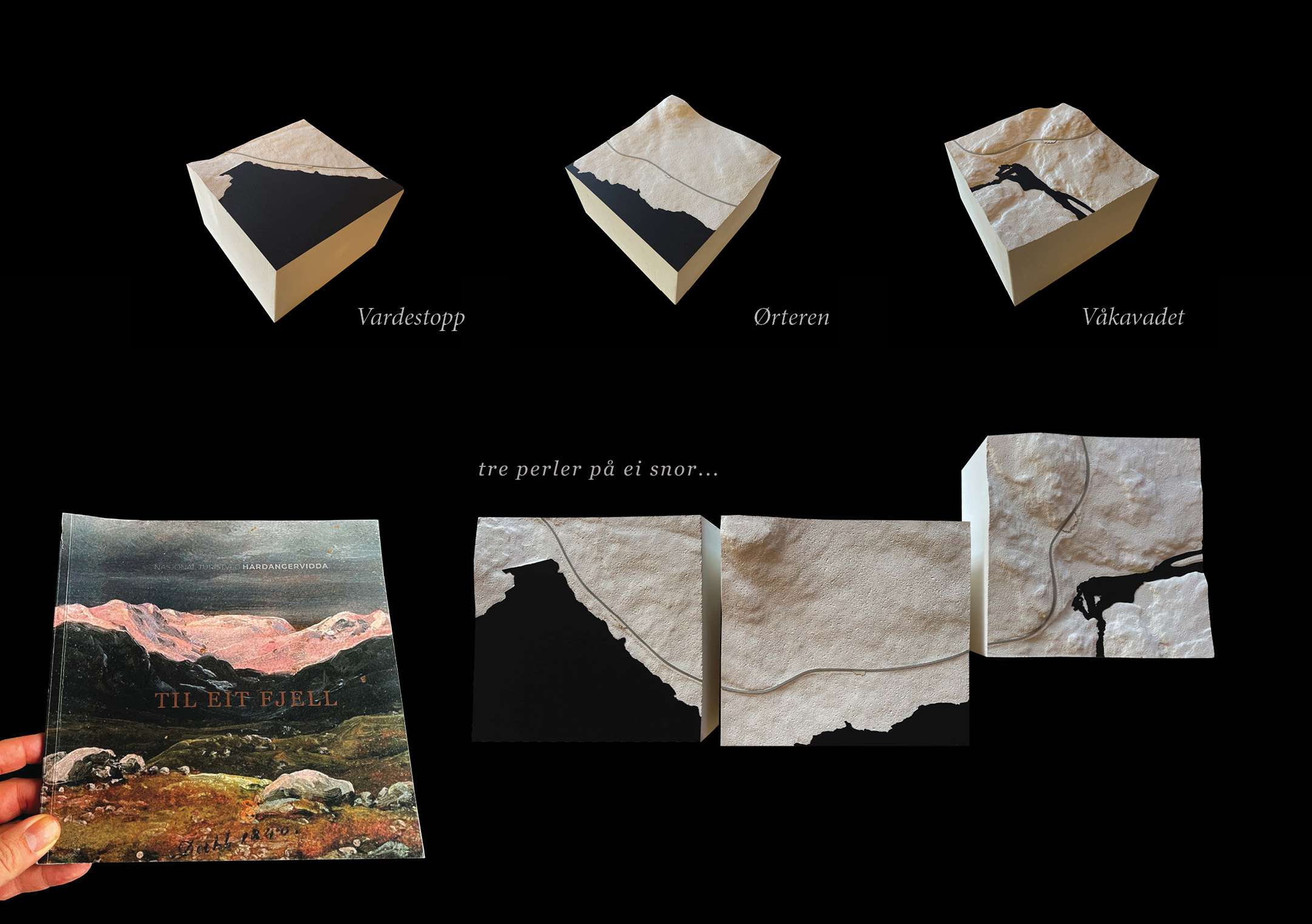
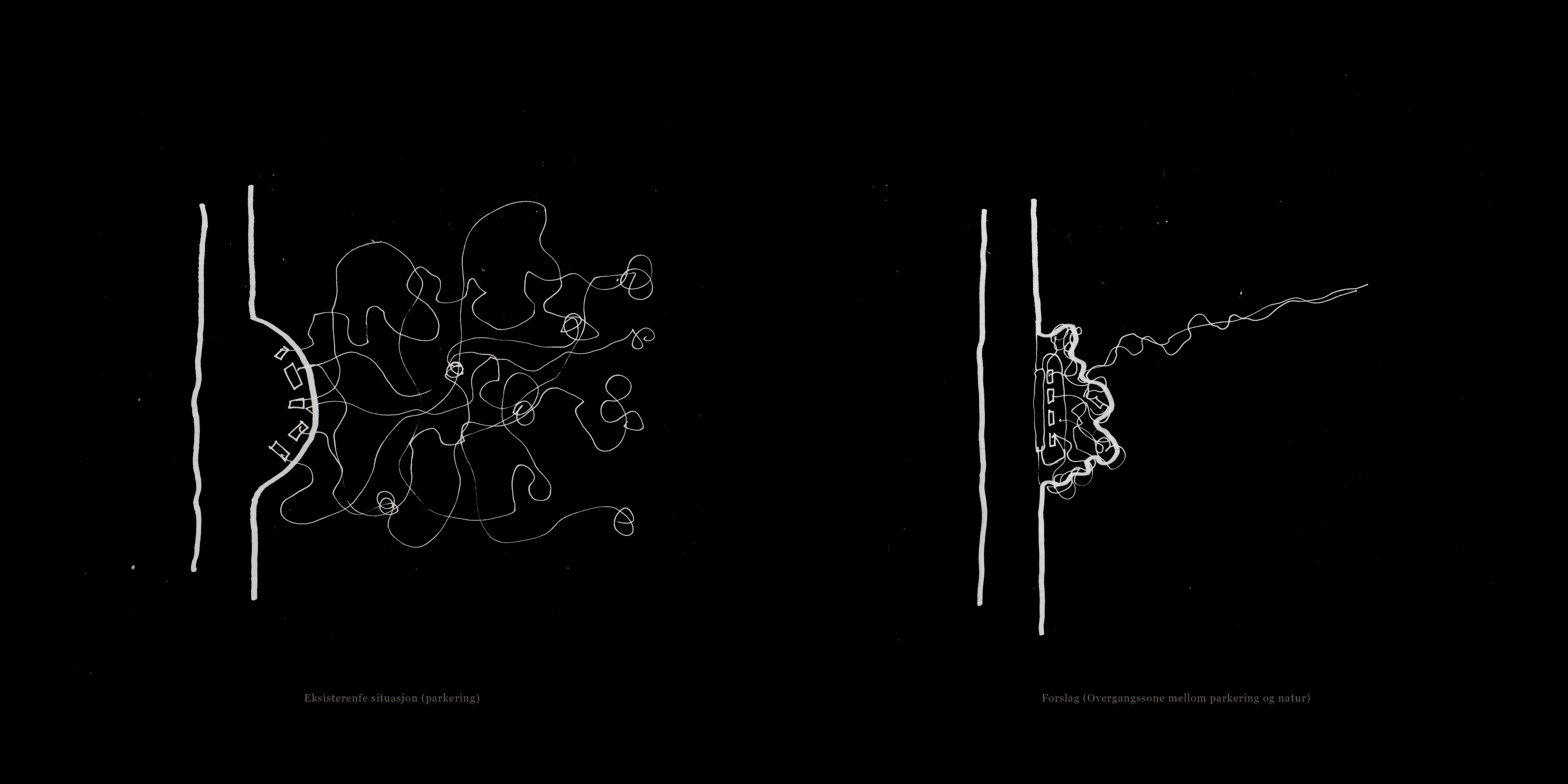
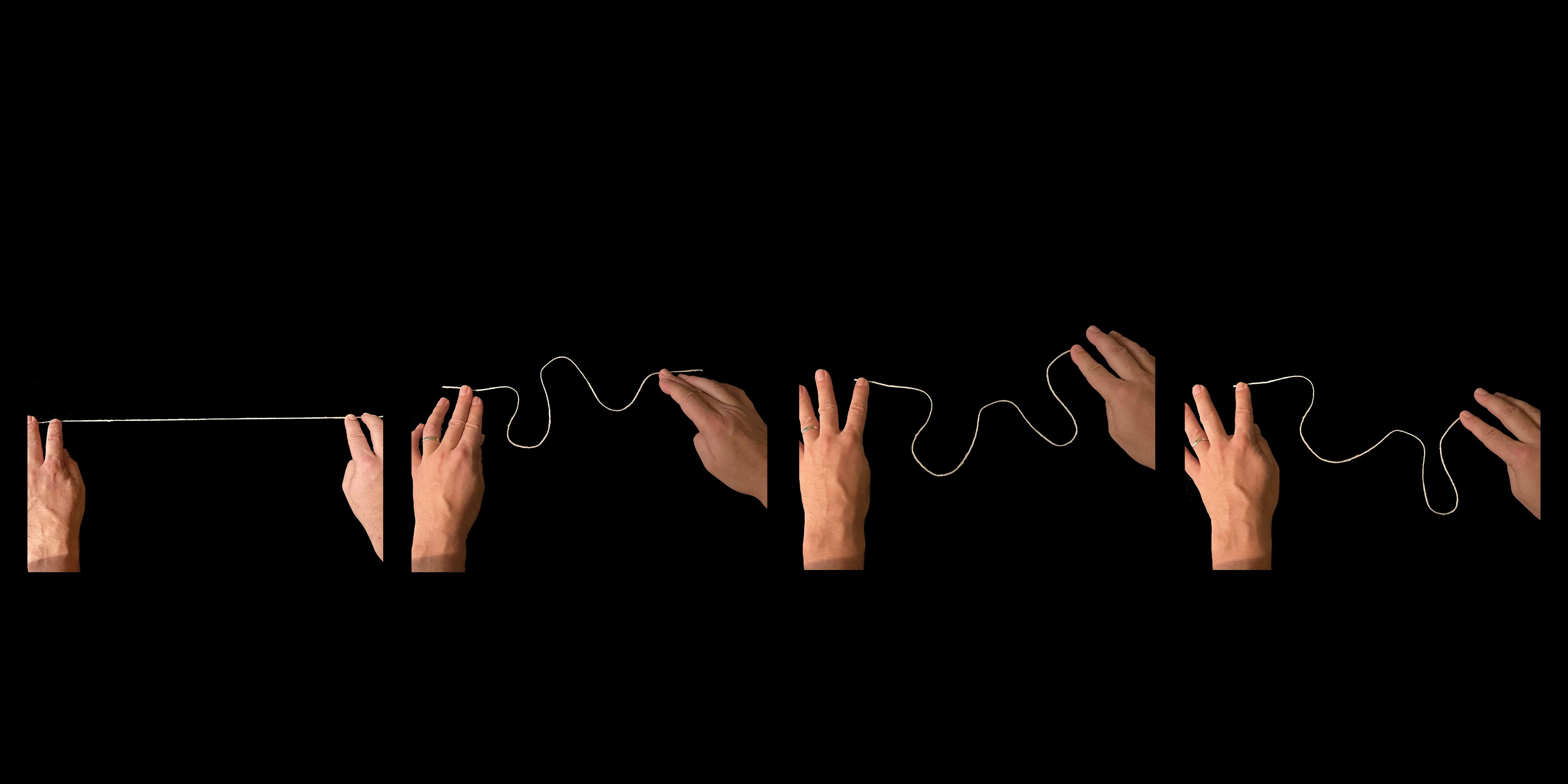
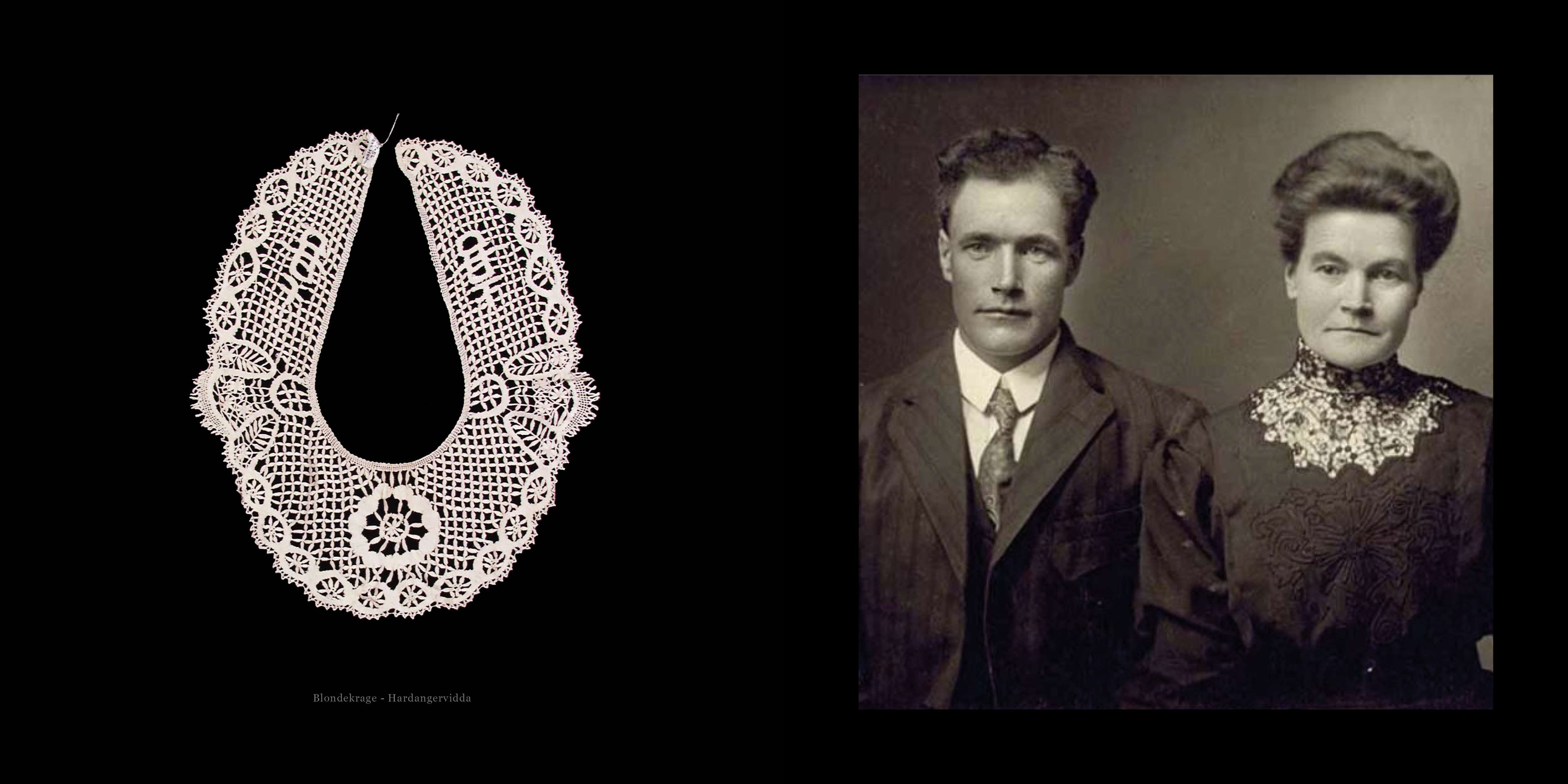
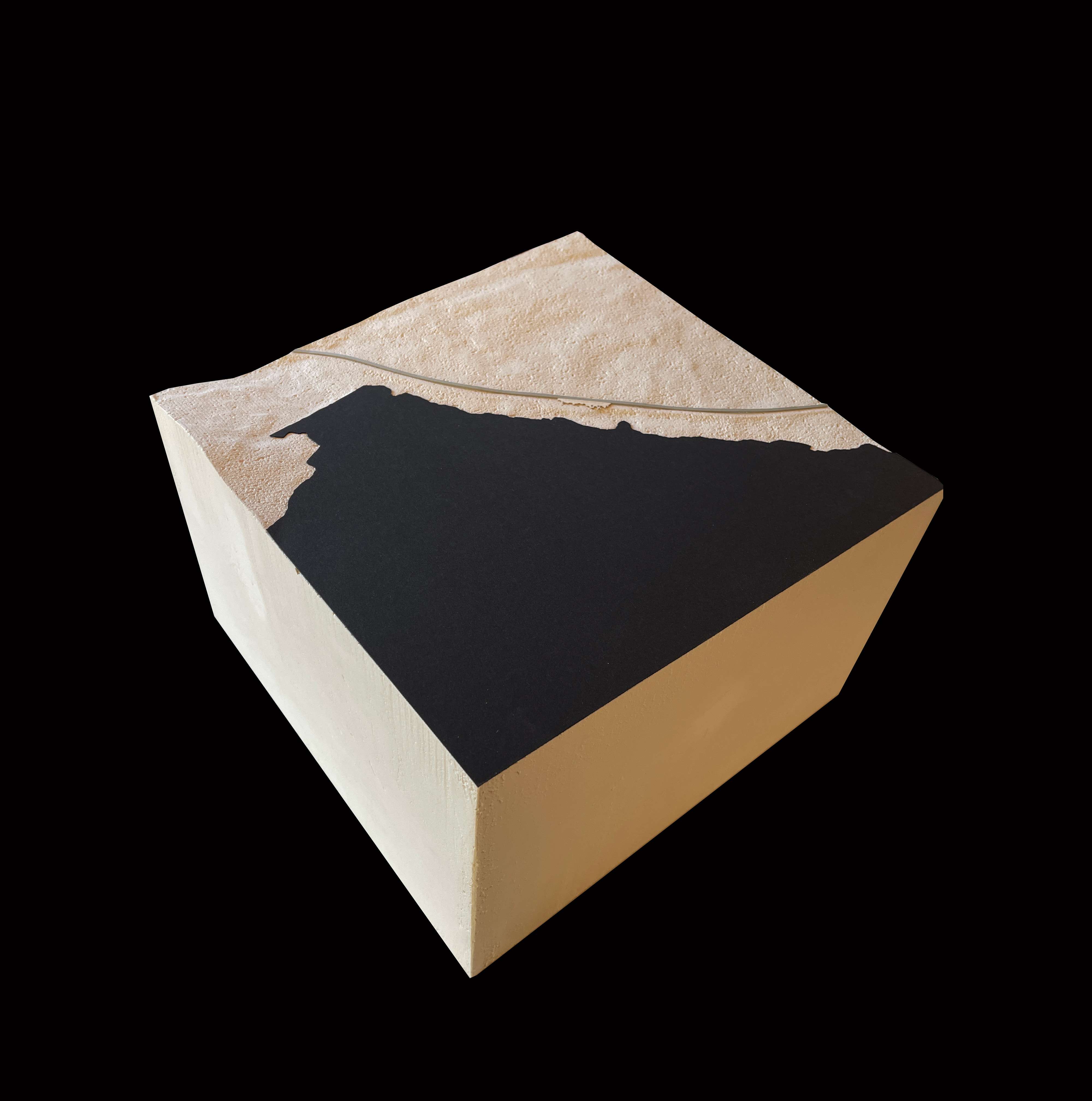

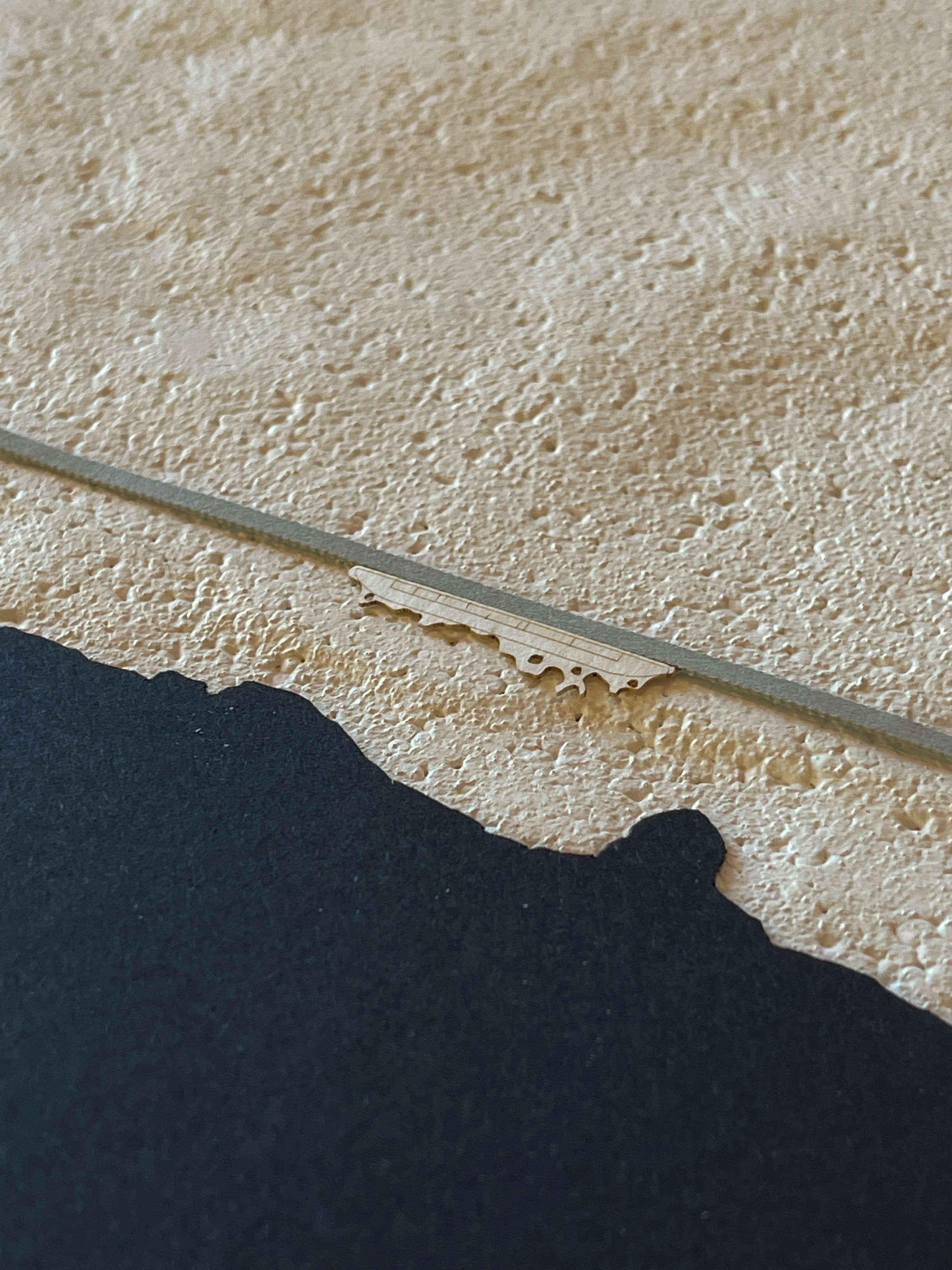
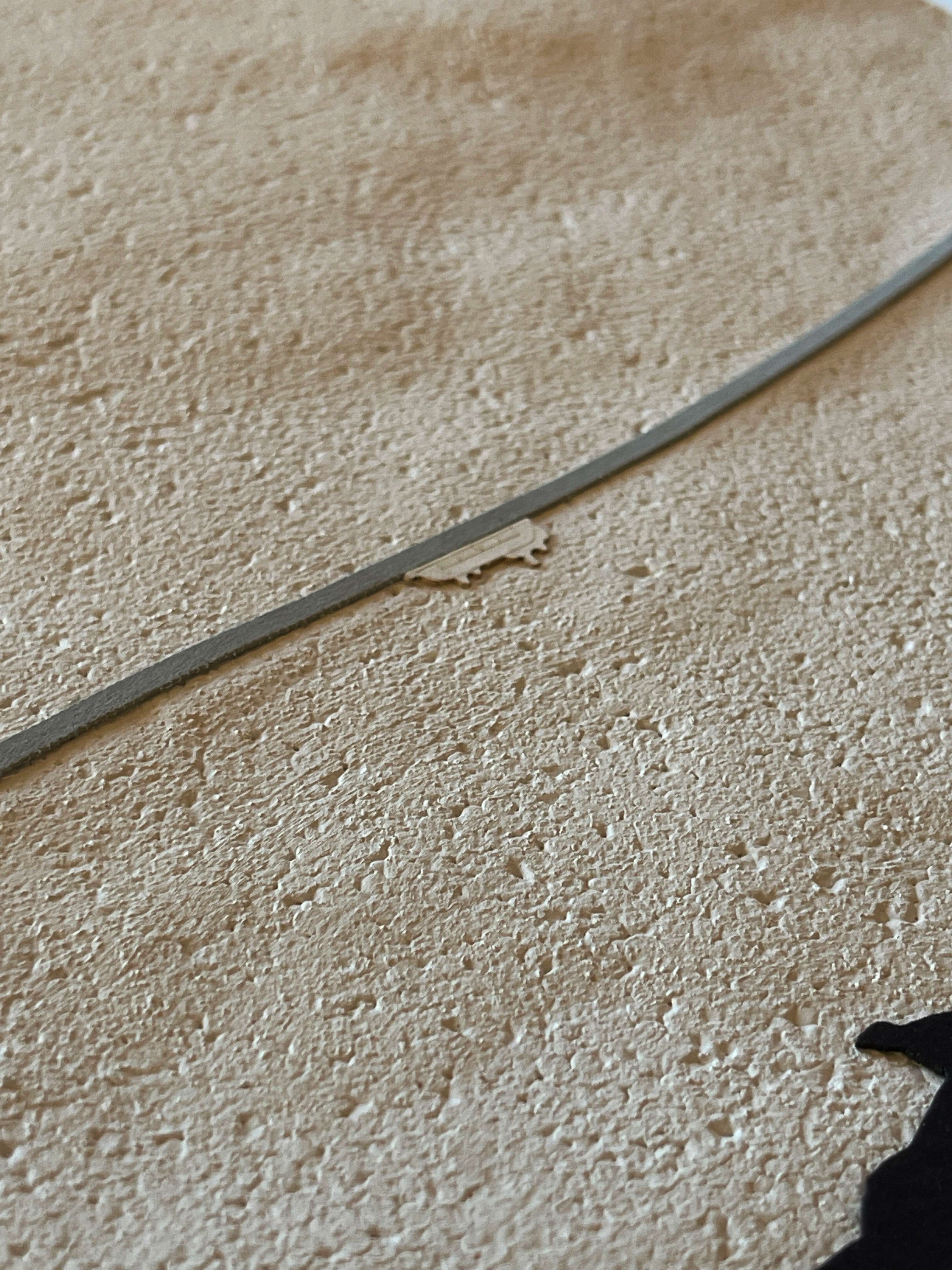
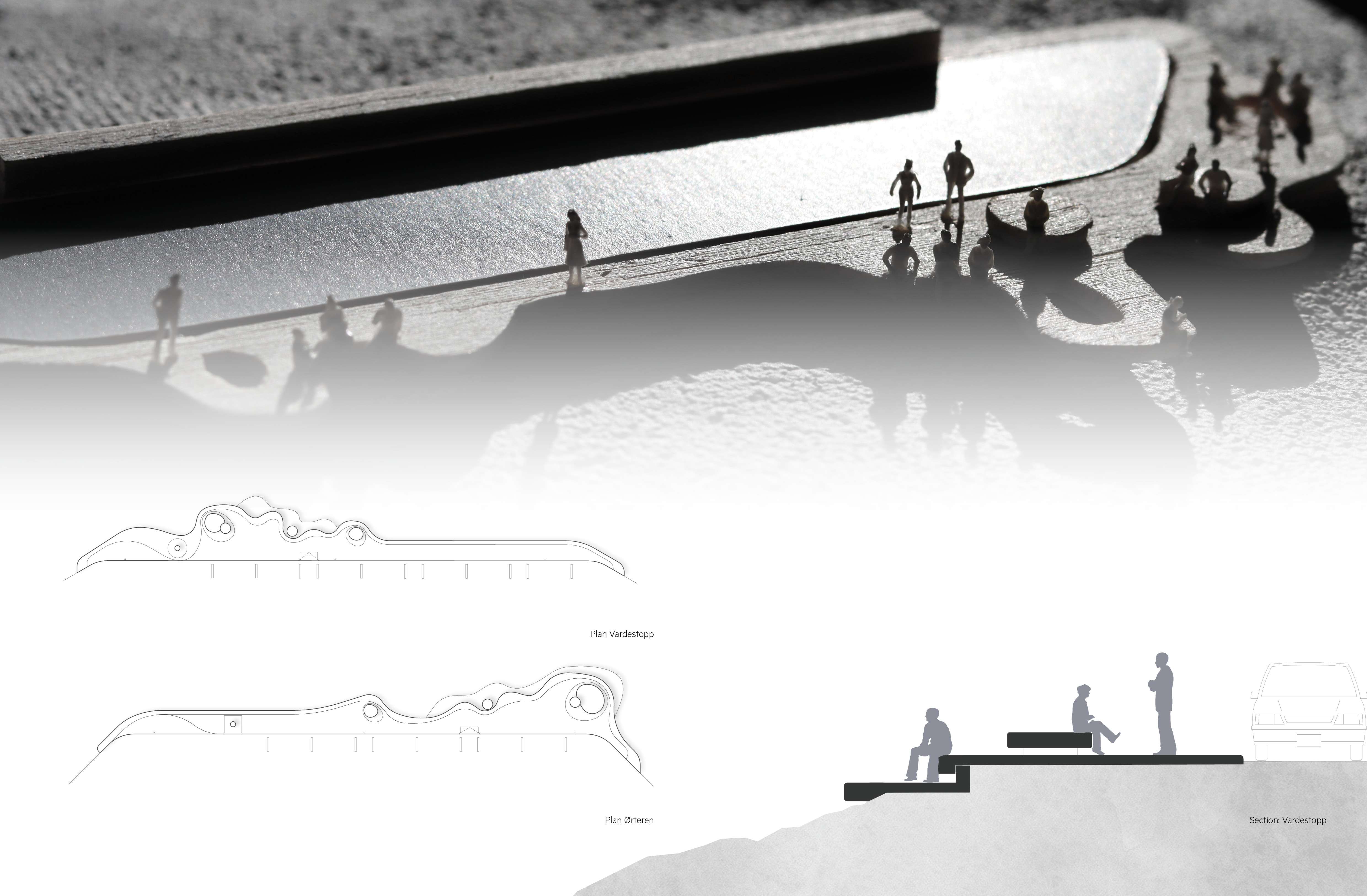
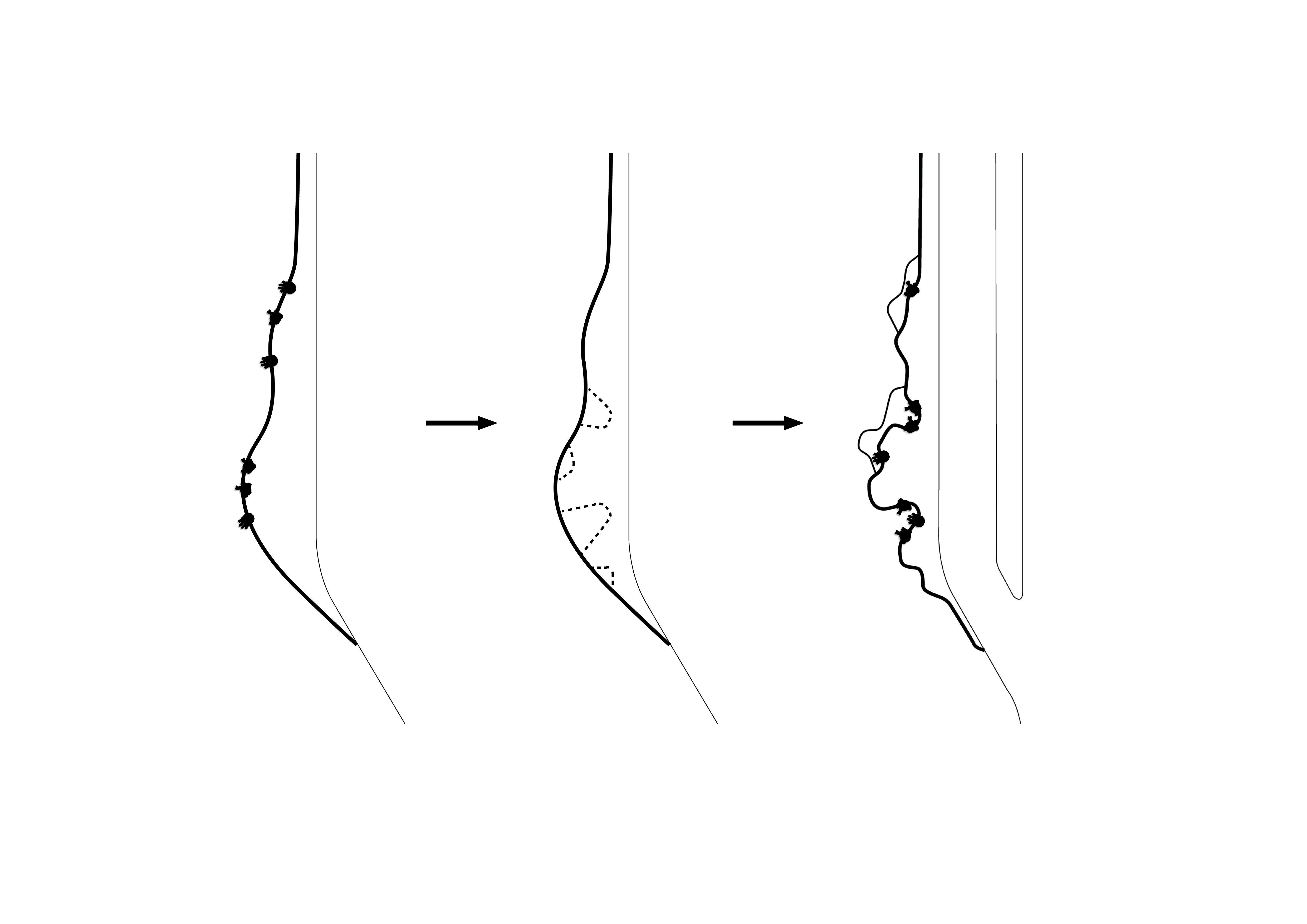
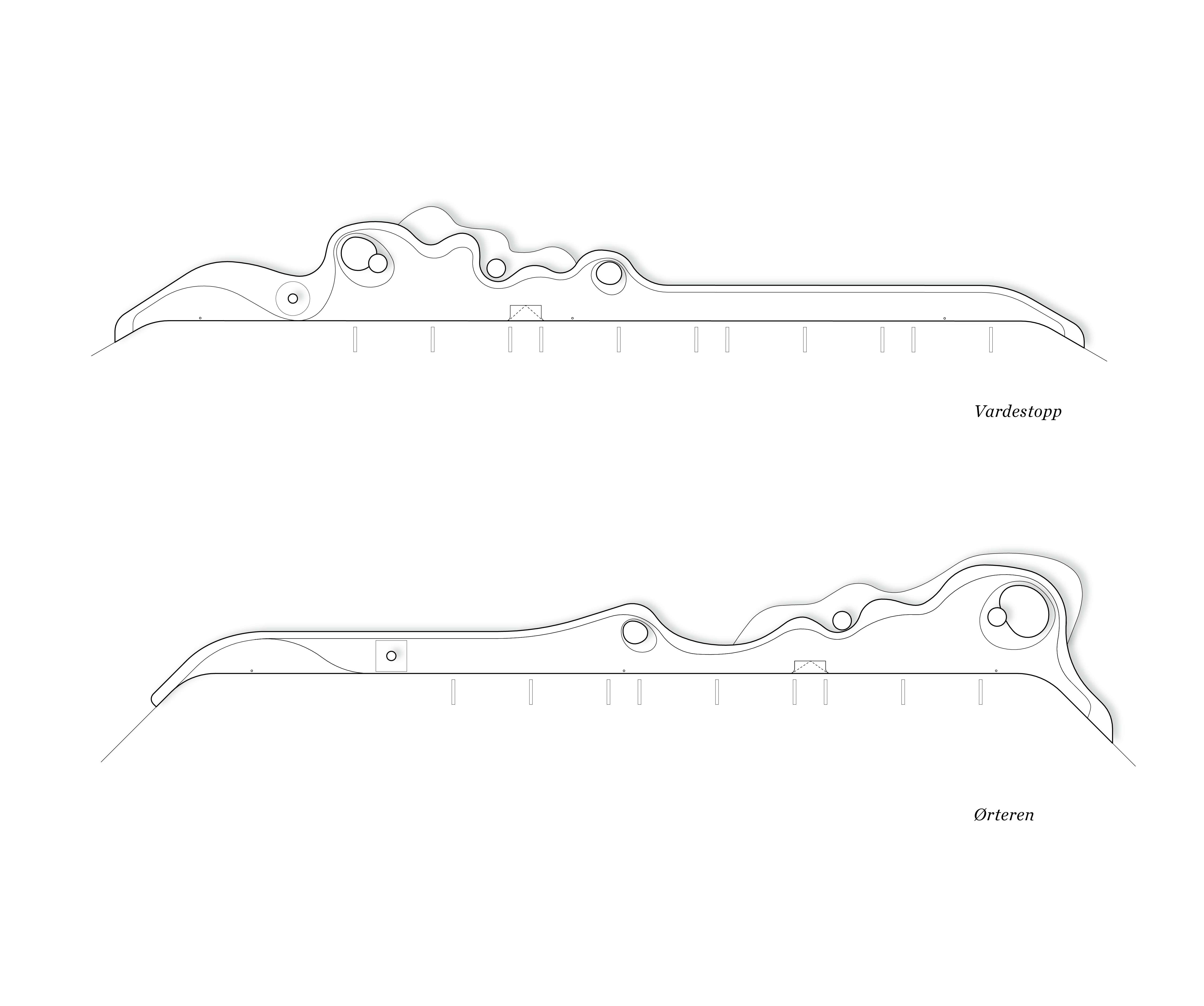
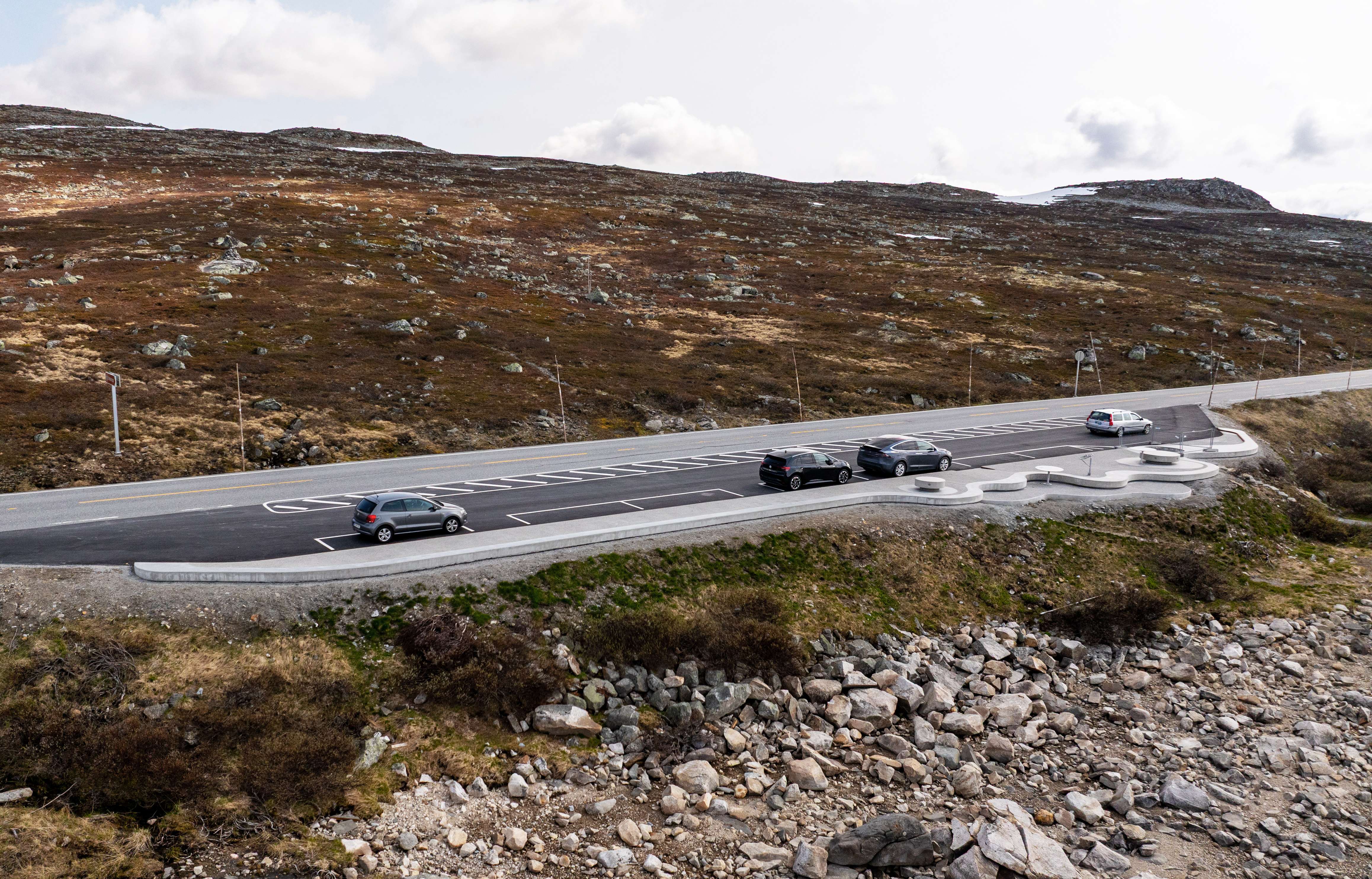
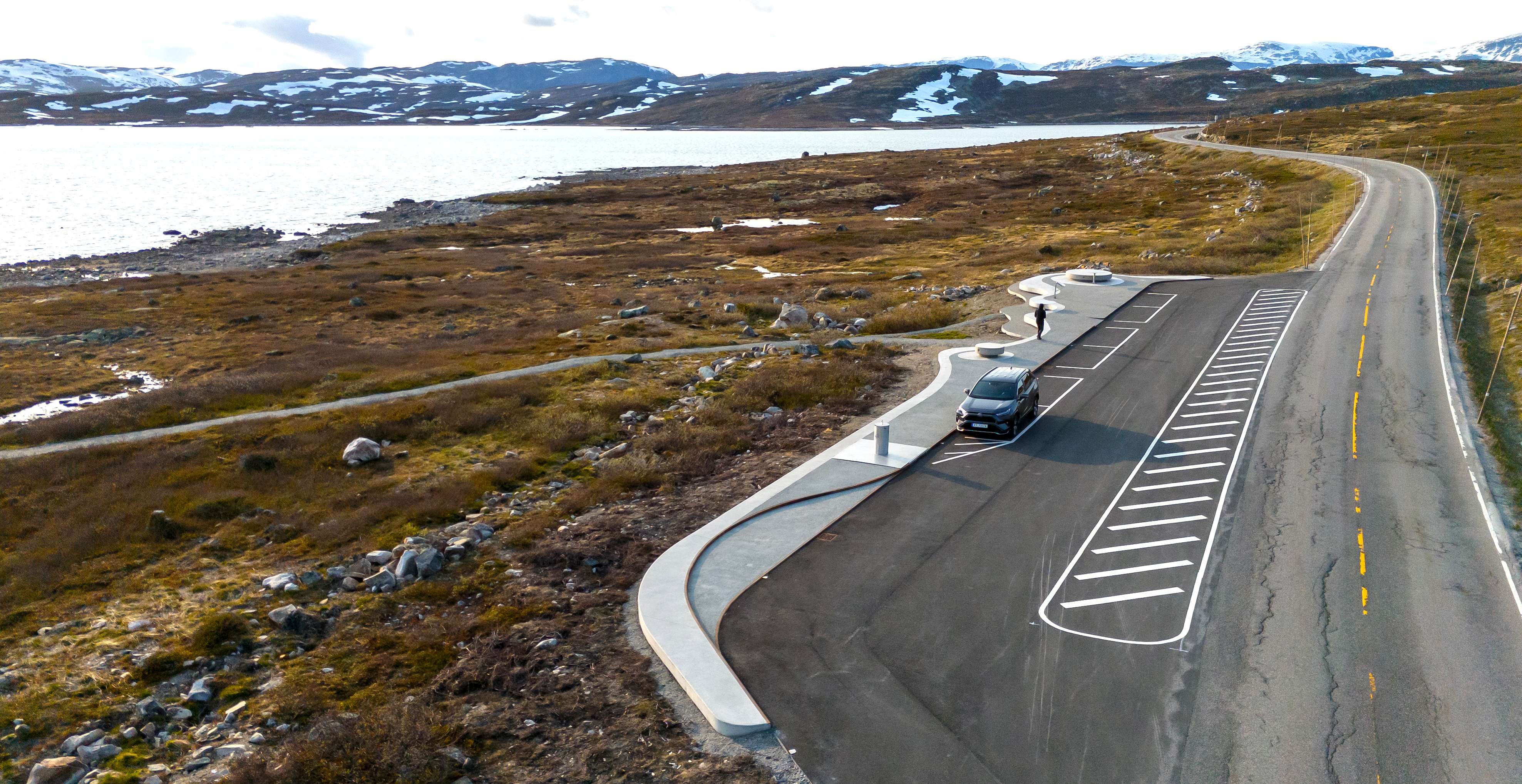
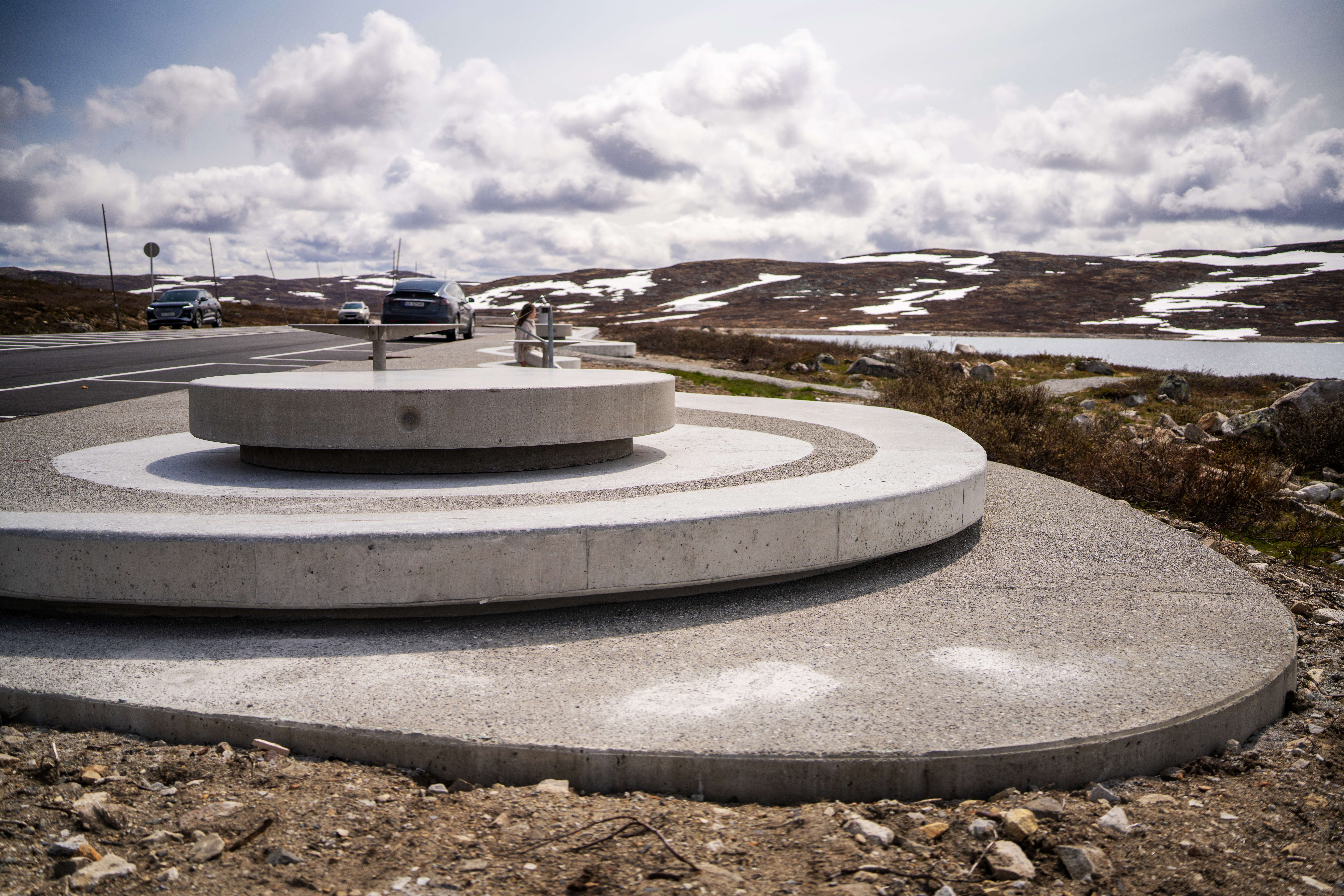
A Dialogue with Nature: Two rest areas in Hardangervidda´s National Park
A Dialogue with Nature
Two rest areas in Hardangervidda´s National Park
Immersed in the vastness of Hardangervidda, where geological processes and the relentless forces of water, ice, and wind have sculpted the land for over 500 million years, this intervention stands as a quiet gesture—an invitation to pause, to listen, and to belong. Rather than imposing, it exists in balance with nature, attuned to the rhythms of a landscape shared by humans, plants, and countless animal species.
In Norway’s largest national park, where wilderness stretches beyond the horizon, we explore the delicate balance between human presence and the untamed—between intervention and restraint.
The project offers a profound reflection on Hardangervidda’s landscape and the deep connection to nature, art and its cultural heritage, that has maintained a strong resonance with the natural environment. It draws inspiration from the evocative paintings of Johan Christian Dahl (1788–1857), a pioneer of the Norwegian Romanticism and the first great interpreter of Norwegian landscapes, as well as the beautiful writings of Olav H. Hauge (1908–1994), a celebrated poet from Ulvik in Hardanger whose poetry, deeply rooted in the Norwegian landscape, reflects on nature as a mirror of human emotions and experiences.
The project proposes a philosophical discourse on the relation between humans and nature, acting as a symbol—a poetic metaphor urging us to reflect on the responsibility we bear for the protection and conservation of our landscapes, as a crucial foundation for life on the planet. A relation that has been harmonious and productive through thousands of years, which is now facing unprecedented challenges. This delicate balance, once sustained through both respect and necessity, is being dismantled, resulting in a profound disruption of climate, biodiversity, and ultimately the very existence of life.
THE CONCEPT
The project originated in a competition to redesign three existing rest areas along the Norwegian National Route No. 7, stretching between Haugastøl and Eidfjord in the Hardangervidda region. This competition was promoted under the National Scenic Routes program, an initiative by the Norwegian Public Roads Administration aimed to enhance the travel experience through Norway's unique landscapes. After the competition in 2021, two of the three rest areas, Vardestopp and Ørteren, have been built.
At the heart of our proposal lies the concept in Norwegian of “La Være,” which translates to “Leave it Be.” Inspired by a diligent respect for nature, this approach advocates for a minimalist gesture. In its essence, lays the idea of restraint, prioritizing the needs of all forms of life that are dependent on the resources of Hardangervidda´s National Park, proposing instead a modest but meaningful intervention, in dialogue with nature.
The main goal is to minimize human impact, creating a new rest area within the footprint of the existing parking and simultaneously minimizing the disorderly movement of humans through the landscape, aiming to heal the scars left by past human presence.
THE DESIGN
The project proposes a new interface—an organic element that seamlessly blends human-made infrastructure with the untamed wilderness, creating a careful and respectful new threshold. An element inspired by the organic forms from Hardangervidda, such as the meandric flow of river streams, the fascinating morphology of the territory, or the countless unique shapes of the lakes in the high mountain plateau. A new flowing edge that softens the transition into the wilderness, embracing the land’s natural contours with elegance and care.
This new organic element is named “Krage” (Lace Collar), inspired by a traditional local costume from Hardanger. The traditional “Krage” is a finely crafted piece of fabric worn around the neck, marking the boundary between the clothed body and the exposed face. On a deeper level, it represents the threshold between the physical world and the spiritual realm. In the project, is used as a symbol that embodies the transition between the structured, rational world of human infrastructure and the precious realm of nature. Just as a lace collar highlights the human face, the “Krage” accentuates the untouched beauty of Hardangervidda, inviting visitors to pause, reflect, and connect to the landscape, with respect.
It is crafted locally from low-carbon concrete, with different textures, aimed to enhance the material’s natural beauty and presence. A rugged texture emerges where the top layer of cement is stripped away, uncovering a mosaic of stones—each a fragment of Hardangervidda’s rich geological story. This exposed aggregate forms the main circulation area, creating a precise contrast to the polished surface of the edges, where the texture is softened to the touch, offering a quiet place to sit and embrace the unique beauty of the landscape.
It lays gently over the terrain, preserving the natural topography and creating an edge, slight lifted from the ground, that respects the character of the place. It simultaneously provides a comfortable resting area, inviting visitors to sit in close connection to the landscape as well as shelter for plants and animals. The meandering form creates a variety of resting areas, each offering a distinctive perspective on Ørteren lake and the elegant forms of the Hardanger Glacier, paying respect to Hardangervidda, both its cultural heritage and its natural environment, fostering a deeper connection to the landscape.
THE OUTCOME
The project embraces a respectful and humble approach to nature—particularly within the delicate area of the national park. Rather than expanding the area with new facilities, creating additional space for cars, larger rest areas and new pathways through untouched landscapes, expanding the human presence already prominent in the National Park, we chose to work with what already existed, restrain rather than imposing.
Our aim was on enhancing the existing elements: respecting the boundaries of the prevailing infrastructure, strengthening few existing trails, and gently restoring the worn traces of human passage. Beyond this, we allowed nature to remain as it is, minimizing our disturbance and presence in the mountains, leaving the landscape untouched—for all the living beings that depend on the fragile wilderness of Hardangervidda.
The mountain demands a humble gaze. It calls for reverence.
It invites us to listen, to pause, and to care.
And perhaps, in the serenity of Hardangervidda, it reminds us that we, too, are a part of nature.
Sustainable Development Goal 15: Life on Land
The project aligns closely with SDG 15: Life on land, which focuses on protecting, restoring, and promoting the sustainable use of terrestrial ecosystems and halting biodiversity loss.
Through a minimal and respectful intervention in the fragile landscape of Hardangervidda National Park, the design emphasizes restraint over expansion, healing over imposition. By working within the existing footprint, preserving natural features, and creating gentle structures that support both people and wildlife, the project contributes to the conservation of biodiversity and the long-term health of the ecosystem.
It reflects a deep awareness of our responsibility to care for nature—leaving it be.
